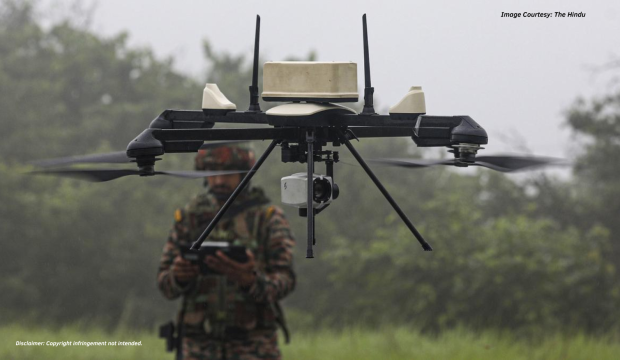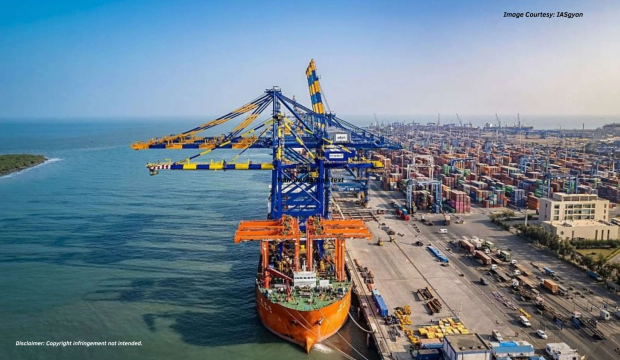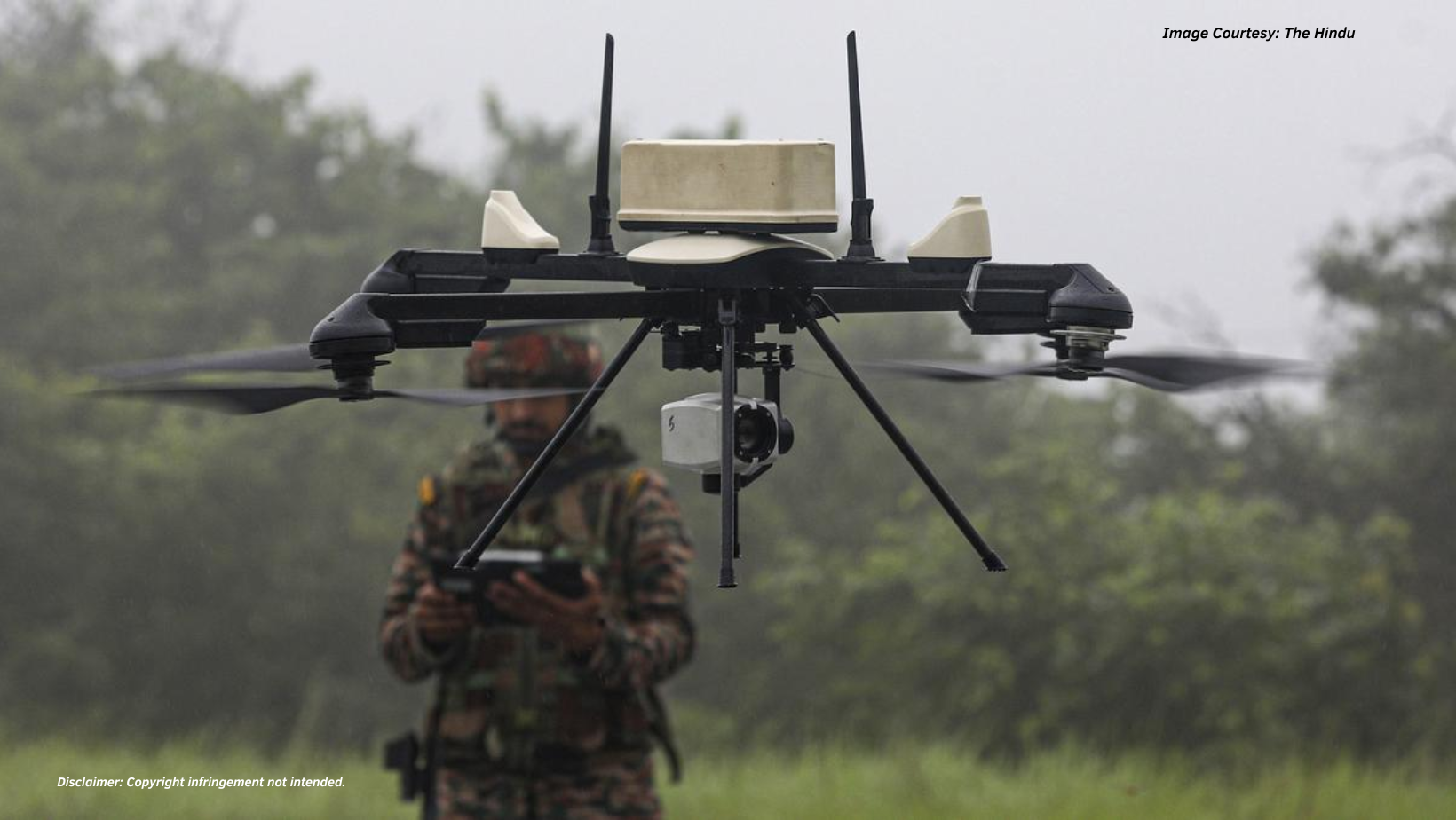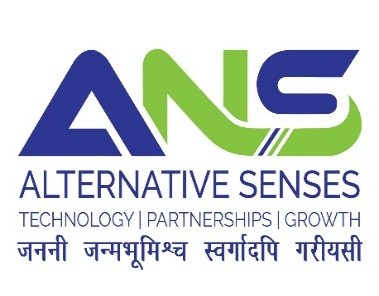Introduction
Japan is undergoing remarkable shifts in its security policies, unlike any other nation in the Indo-Pacific region. Just a decade or two ago, it would have seemed inconceivable for Tokyo to make such bold adjustments to its defense strategies and clearly signal its intent to take on a larger role in regional security matters. Japan no longer views it as taboo to provide military technology and arms to countries it regards as friendly. It is trying to shed the post-World War II defensive defence system and become a normal country. Article 9 of the American written pacifist constitution of Japan renounces war and prohibits it from engaging in any kind of warfare to resolve dispute. However, with Shinzo Abe coming to power in 2012, efforts were made to re-interpret the Article 9 which would expand the role of self-defence forces. Soon, Japan came up with the ‘Defence Acquisition Agency’ which created the ‘Acquisition Technology and Logistics Agency (ATLA)’, in order to improve defence procurement, notably the easing of its arms exports.[1]
In 2014, ‘Three Principles on Arms Export’ was revised and renamed as the ‘Three Principles on Transfer of Defense Equipment and Technology’.[2] This happened mostly because of threats coming from China and North Korea’s. In addition, Tokyo is also attempting to bolster its defence sector while also attempting to lessen its excessive reliance on the US.
As Tokyo is navigating some of the most significant shifts in its security policies, the victory of the former Defence Minister Shigeru Ishiba of the Liberal Democratic Party (LDP) portends further transformations in the country’s defence policies. It is anticipated that considering Tokyo’s ambitions to play the role of a key security player in the Indo-Pacific, the region could expect to witness several new defence initiatives reflecting a broader and more assertive stance. Meanwhile, India remains a crucial partner for Japan in the Indo-Pacific region. Both the countries share several common interests and aspire to maintain regional stability and security. With the change in leadership in Japan, it is crucial to see how Japan’s changing strategies will impact the India-Japan strategic partnership, particularly through increased military collaboration, technology sharing, and joint efforts to address mutual security concerns, especially regarding China’s growing influence. This paper explores how Ishiba’s vision may impact India and assesses how these changes could align with New Delhi’s objectives in the Indo-Pacific region.
Enhancing India-Japan Defence Ties under Ishiba’s Leadership in the Indo-Pacific
Under Ishiba’s leadership, a primary focal area is likely to be increased defence cooperation with India. The recent ‘2+2’ dialogue in New Delhi on August 20, 2024, indicated a mutual commitment to strengthen defence and security cooperation between the two countries.[3] This debate represents a big step forward in military coordination, with topics ranging from technology transfers to cooperative exercises aimed at improving regional security.
During this meeting, the foreign and defence ministers addressed the status of transferring battleship communication antennae and related technology from Japan to India.[4] This transfer will mark Japan’s first sale of defence equipment under a 2015 agreement, demonstrating Tokyo’s shifting defence stance and willingness to engage in military cooperation. In addition, this defence technology transfer is consistent with the larger goal of establishing a “Free and Open Indo-Pacific,” which both countries share as a counterbalance to China’s growing assertiveness in the region. Ishiba’s initiative may revitalise Japan’s defence commitments to improve cooperation on joint military drills and humanitarian endeavours. Such actions will confirm India’s status as a crucial partner in advancing stability and peace in the Indo-Pacific and reinforce Japan’s role as a regional security provider.
Shigeru Ishiba’s Vision for the QUAD and its Strategic Benefits for India
Ishiba’s will to improve its military prowess and emphasis on fortifying relationships will probably have a big effect on the QUAD. Under Ishiba’s direction, Japan, a significant member of the minilateral institution might take a more robust approach to fending off regional challenges. This is mostly keeping in mind the threats from China and North Korea.[5] In addition, the newly appointed leader’s participation in the QUAD could move towards more comprehensive measures. This could incorporate both economic, technology, supply chain resilience, infrastructure development, climate resilience, cybersecurity, maritime security etc.[6]
Being a prominent member of the Quad, New Delhi stands to benefit from this. Infrastructure development remains crucial to both the countries and carries mutual interest. Japan’s role in developing India’s infrastructure has been immense. It is expected that under the leadership of Ishiba, the partnership in this area would expand.
Moreover, technology partnerships between India and Japan, facilitated by the QUAD, could enhance India’s position in the global technology landscape. The Japanese government is investing a lot of funds in cutting-edge technology like the semiconductors. Tokyo and New Delhi have the chance to collaborate on joint ventures for semiconductor manufacturing facilities, particularly for production equipment. Collaboration with Japan on “back end process” could help India become less dependent on other countries since Assembly, Testing, Marking, and Packaging (ATMP) plants are expected to contribute to the development of an all-encompassing semiconductor ecosystem in India in the future.[7]
Apart from semiconductors, New Delhi has opportunities to collaborate with Tokyo in other areas like artificial intelligence, robotics etc.
When it comes to supply chain, Ishiba’s vision aligns with that of New Delhi’s efforts to diversify its supply chain. During the COVID-19 pandemic, the global supply chains were disrupted, the QUAD members have realised the salience of reducing their reliance on one source. Through the Japan led initiative supply chain resilience initiative (SCRI), India could create alternative supply routes. This would not only reduce vulnerabilities in India’s supply chain but also boost domestic production capacities and employment.
Ishiba's Vision of an Asian NATO for India
The war in Ukraine changed the security landscape. Russia, a permanent member of the UN Security Council, invaded Ukraine, sparking the start of the conflict there. This was the UN’s maximum level of collective security. At this point, the US President Joe Biden stated: “There are no obligations to defend Ukraine because it is not a member of NATO [the North Atlantic Treaty Organisation].[8] Thus, the US would refrain from using force.” Such was the logic given by the US.
Under Article 51 of the UN Charter,[9] Ukraine has the right of all nations to “exercise the right of collective self-defense in the event of a request for assistance from an aggressor nation, pending a decision by the UN Security Council.” Although Ukraine is not a member of NATO, this right should not have been denied to it, but the US did not support Ukraine in accordance with the article.[10]
The dynamics of geopolitics in Asia resemble the situation in Ukraine. China playing the role of Russia, with Taiwan representing Ukraine. It is believed that the absence of a collective defense arrangement which is similar to NATO, enhances the likelihood of conflict in the Indo-Pacific region. In light of these challenges, PM Ishiba has encouraged the creation of an Asian NATO, a formalised collective security arrangement under which the member states pledge to defend each other in times of external aggression. The security alliance would focus on countering the threats coming from China and North Korea with an aim to deter such challenges through a unified security mechanism.
India’s foreign policy has always maintained strategic autonomy and avoided any kind of formal military alliance. If India joins an Asian NATO, it would potentially limit New Delhi’s ability to maintain a balanced relationship with major powers like Russia. Since, it would be a formal military alliance, which is aimed at countering China directly, it would definitely antagonise Beijing and could intensify tensions between India and China.
The newly appointed Prime Minister’s policy direction clearly shows an anti-China stance. This could offer strategic benefits to India. Such a collective arrangement could create a collective deterrence against China’s expanding behaviour in the Indo-Pacific region. New Delhi could get support in countering Chinese activities along its borders especially in the disputed areas of the Line of Actual Control (LAC) and in the Indian ocean region (IOR). Apart from this, an Asian NATO could enhance security in the maritime domain through joint patrols, information sharing and other cooperative security measures. This could prevent China’s expansion in the Indian Ocean and safeguard the vital sea lanes of communication (SLOCs).
Furthermore, given that Japan has traditionally maintained a free, open, and inclusive Indo-Pacific, he thinks that a regional security arrangement will help to increase peace and stability in the area. This is in line with India’s vision of an Indo-Pacific region that is open, free, and inclusive.
Ishiba’s Leadership: Does it Benefit India-Japan Economic Relations?
Ishiba’s administration would probably prioritise how security relations and commercial alliances are intertwined. According to recent data, there has been a considerable expansion of the economic link between India and Japan. Bilateral trade reached around $22.85 billion in the fiscal year 2023-24, indicating a growing level of economic dependency.[11] Furthermore, Japan has been a major investor in India for a long time; in FY2021, it ranked as the fifth-largest investor with direct investments of about 641 billion yen.
The Government of India and Japan Bank for International Cooperation have signed an agreement to establish a $600 million India Japan Fund (IJF) to support low-carbon emission projects.[12] This indicates that both the countries are ready to tackle mutual security issues through economic cooperation.
Over the past few decades, Japan’s ODA loans have gone mostly to India. One of the best instances of Japanese collaboration through the use of ODA is Delhi Metro. Japan is still working together to strengthen the strategic connectivity that connects Southeast Asia and South Asia by combining the “Act East” policy with the “Partnership for Quality Infrastructure.”[13] The extent of Japan’s economic links to India is demonstrated by the 567.5 billion yen ($3.80 billion) in loans that Japan granted for the development projects in India in FY2022.[14]
India-Japan Collaboration on Renewable Energy
Shigeru Ishiba has been a strong advocate of renewable energy and energy conservation. This aligns with India’s various initiatives on renewable energy. India aims to reach net-zero carbon emissions by 2070, 50% cumulative installed renewable power by 2030, and a reduction of less than 45% in the country’s economic carbon intensity by the end of the decade. By 2030, India wants to have 500 GW of installed capacity for renewable energy.[15] New Delhi also aspires to manufacture five million tonnes of green hydrogen by 2030. New Delhi has also approved 50 solar farms totalling 37.49 GW in capacity.[16] By 2030, offshore wind energy is expected to reach 30 GW, with identified prospective locations.
Considering the above initiatives in the renewable energy sector, both New Delhi and Tokyo can collaborate in reducing their dependency on fossil fuels under the leadership of PM Modi and PM Ishiba. These initiatives resonates with Ishiba’s vision of enhancing energy security through clean energy.
In addition, India is the founding member of the International Solar Alliance (ISA) and focusses on developing solar technology and infrastructure. Since, Japan has the knowledge of green financing it could be an ideal partner for India in offering financial solutions for solar energy initiatives across ISA member nations with an emphasis on developing areas such as Africa and Southeast Asia.
Conclusion
It is envisioned that Shigeru Ishida as the newly elected Prime Minister of Japan could present a pivotal moment for the India-Japan, partnership, particularly in the realm of security and defense collaboration. Both countries want to fortify their defence cooperation in light of the intricate regional dynamics, and Ishida’s government has the potential to provide mutual geopolitical and economic advantages for India. Free and Open Indo-Pacific is a shared goal of both the countries and in the future, it is expected that India-Japan relations are likely to see deeper engagements. This would further solidify their role as regional partners. As India navigates its complex relationship with China, closer engagement with Japan will play a key role in shaping regional stability and long-term peace.
DISCLAIMER
The paper is author’s individual scholastic articulation and does not necessarily reflect the views of CENJOWS. The author certifies that the article is original in content, unpublished and it has not been submitted for publication/ web upload elsewhere and that the facts and figures quoted are duly referenced, as needed and are believed to be correct.
Endnotes
- Ministry of Defense (2015), ”Acquisition, Technology & Logistics Agency”, Government of Japan,
[Online: web], Accessed: 21 May 2019, URL: https://www.mod.go.jp/atla/en/soubichou_gaiyou.html The Government of Japan (2014), “The Three Principles of Transfer of Defense Equipment”, URL: https://www.mofa.go.jp/fp/nsp/page1we_000083.html
- Simantik Dowerah, (2024), “Rise of Shigeru Ishiba: A new dawn for India-Japan relations”, First Post, URL: https://www.firstpost.com/world/rise-of-shigeru-ishiba-a-new-dawn-for-india-japan-relations-13819659.html
- Ibid
- Ibid
- Simon Hutagalung, (2024), “Ishiba must strike a balance of continuity and change”, Asia Times, [Online: web], Accessed: 28 September 2024, URL: https://asiatimes.com/2024/09/ishiba-must-strike-a-balance-of-continuity-and-change/
Ulupi Borah, (2024), “India Japan Collaboration in the Semiconductor Sector: Building a Resilient Future”, Centre for Joint Warfare Studies, September 2024, URL:
https://cenjows.in/pdfview/?pID=24721&url=2024/09/Ulupi_Borah_Issue_Brief_Sep_2024.pdf
Hudson Institution, (2024), “Shigeru Ishiba on Japan’s New Security Era: The Future of Japan’s Foreign Policy”, [Online: web], Accessed: 28 September 2024, URL: https://www.hudson.org/politics-government/shigeru-ishiba-japans-new-security-era-future-japans-foreign-policy
- United Nations, “United Nations Charter, Chapter VII: Action with Respect to Threats to the Peace, Breaches of the Peace, and Acts of Aggression”, URL: https://www.un.org/en/about-us/un-charter/chapter-7
- Hudson Institution, (2024), “Shigeru Ishiba on Japan’s New Security Era: The Future of Japan’s Foreign Policy”, [Online: web], Accessed: 28 September 2024, URL: https://www.hudson.org/politics-government/shigeru-ishiba-japans-new-security-era-future-japans-foreign-policy
- Simantik Dowerah, (2024), “Rise of Shigeru Ishiba: A new dawn for India-Japan relations”, First Post, URL: https://www.firstpost.com/world/rise-of-shigeru-ishiba-a-new-dawn-for-india-japan-relations-13819659.html
- Gautami Hazarika, (2023), “India, Japan launches $600 million fund Focusing on Low Carbon Emission Strategies”, MERCOM, URL: https://www.mercomindia.com/india-japan-launch-low-carbon-emission-strategies
- Ministry of Foreign Affairs, (2024), “Japan-India Relations (Basic Data)”, Government of Japan, URL: https://www.mofa.go.jp/region/asia-paci/india/data.html
- Ibid
- Amit Manohar, (2024), “Renewable Energy”, Invest India, URL: https://www.investindia.gov.in/sector/renewable-energy#:~:text=India%20aims%20for%20500%20GW,have%20been%20approved%20in%20India.
- Ibid














































